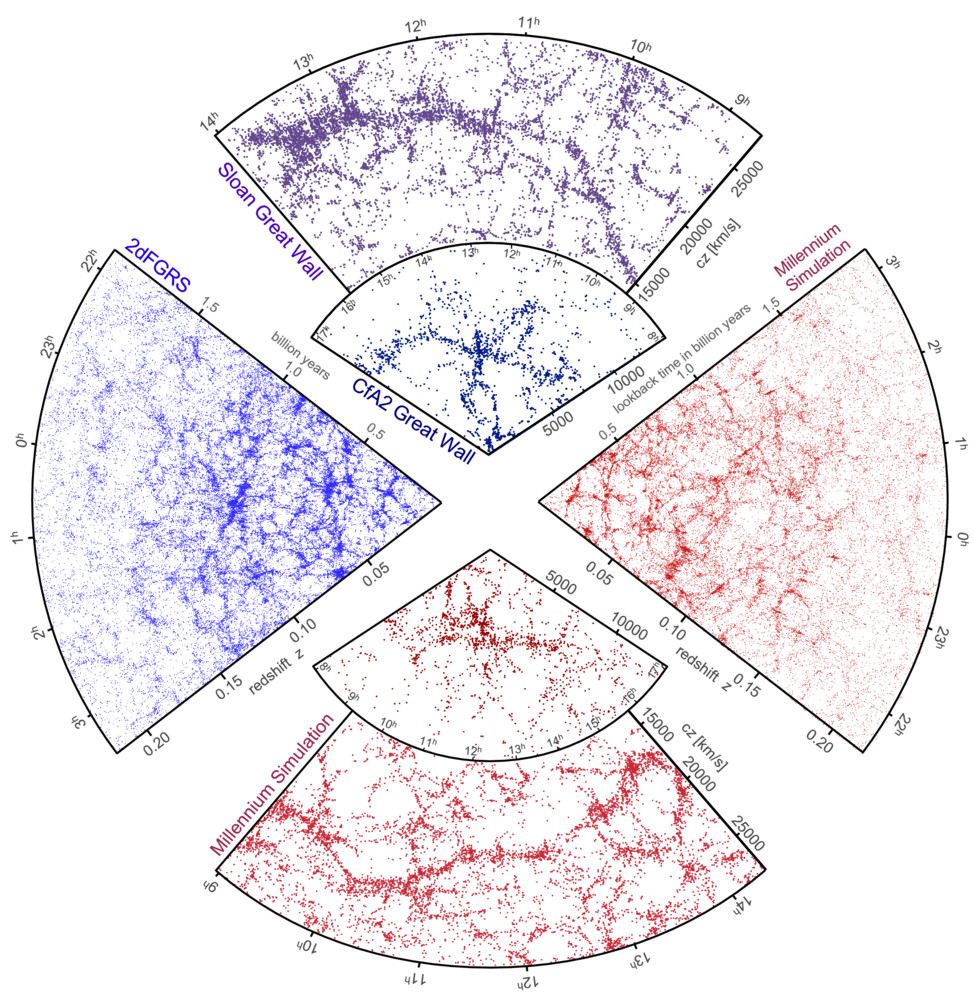Millennium Galaxy Catalogues

When published in 2005, the Millennium Run was the largest ever simulation of the formation of structure within the ΛCDM cosmology. It uses 1010 particles to follow the dark matter distribution in a cubic region 500h−1Mpc on a side, and has a spatial resolution of 5h−1kpc. Application of simplified modelling techniques to the stored output of this calculation allows the formation and evolution of the ~107 galaxies more luminous than the Small Magellanic Cloud to be simulated for a variety of assumptions about the detailed physics involved.
As part of the activities of the German Astrophysical Virtual Observatory, the Millennium collaboration has created relational databases to store the detailed assembly histories both of all the haloes and subhaloes resolved by the simulation, and of all the galaxies that form within these structures for two independent models of the galaxy formation physics. A Structured Query Language (SQL) server has been implemented for these databases. This allows easy access to many properties of the galaxies and halos, as well as to the spatial and temporal relations between them. Information is output in table format compatible with standard Virtual Observatory tools.
These database structures are fully accessible to all users, and are hosted by the Max-Planck Institute for Astrophysics (with a mirror at Durham University) at this URL: http://www.mpa-garching.mpg.de/millennium
At the site, interested scientists can learn SQL and test queries on a small, openly accessible version of the Millennium Run (with volume 1/512 that of the full simulation). They can then request accounts to run similar queries on the databases for the full simulations. The site also contains a list of scientific papers using the Millennium Run data, more than 650 thus far.
About HITS
HITS, the Heidelberg Institute for Theoretical Studies, was established in 2010 by physicist and SAP co-founder Klaus Tschira (1940-2015) and the Klaus Tschira Foundation as a private, non-profit research institute. HITS conducts basic research in the natural, mathematical, and computer sciences. Major research directions include complex simulations across scales, making sense of data, and enabling science via computational research. Application areas range from molecular biology to astrophysics. An essential characteristic of the Institute is interdisciplinarity, implemented in numerous cross-group and cross-disciplinary projects. The base funding of HITS is provided by the Klaus Tschira Foundation.